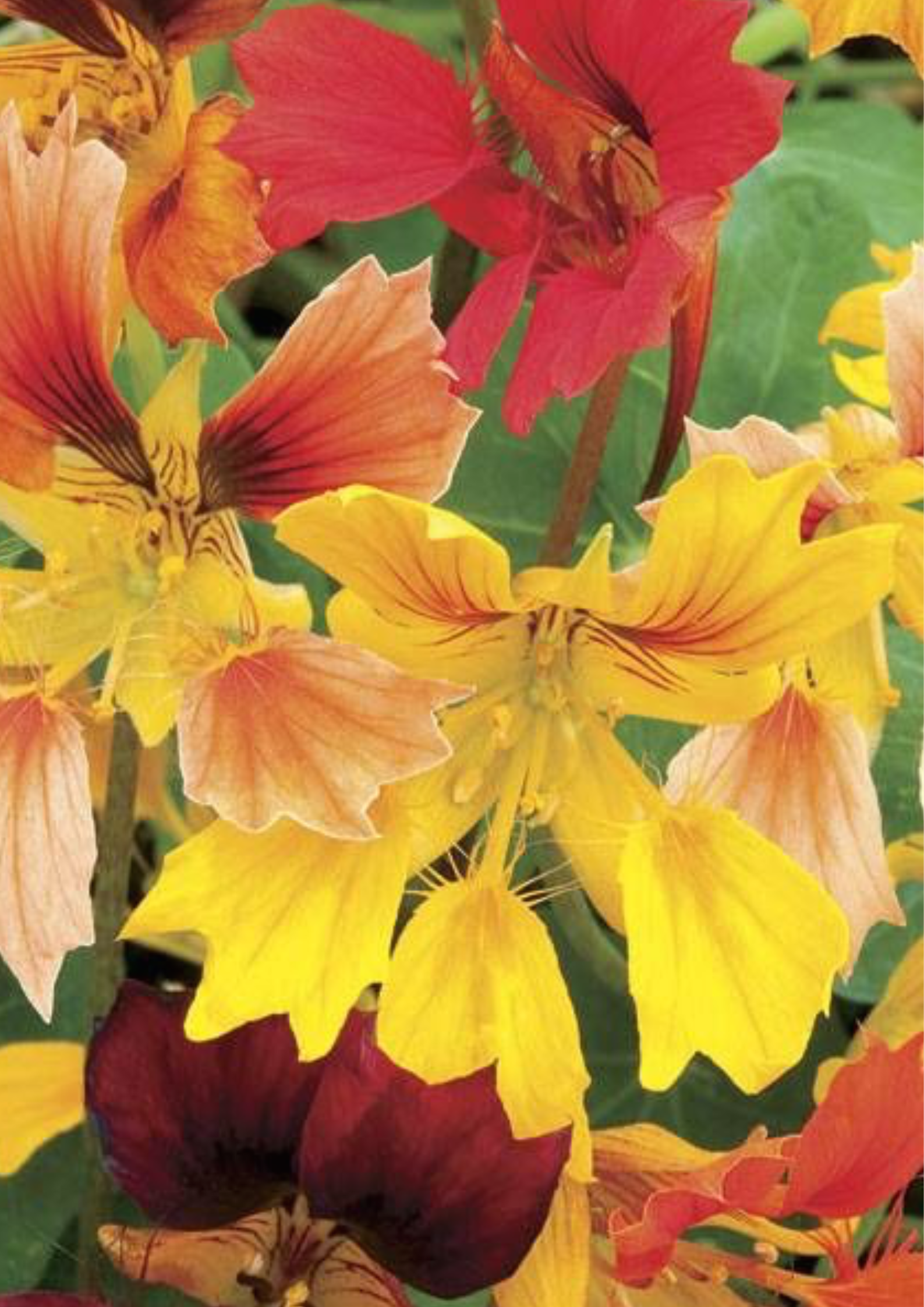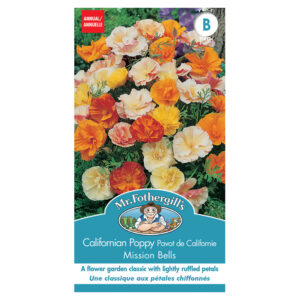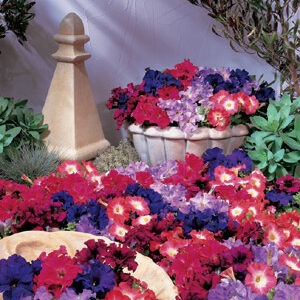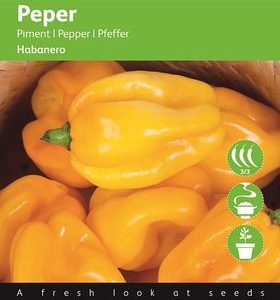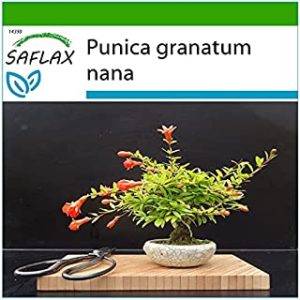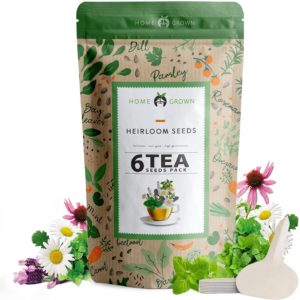Phoenix Nasturtium Seeds
2,550 د.ك
The famous “flame nasturtium” is here
Phoenix has burst onto the garden scene at last! Long awaited and more than a decade in the making, this British introduction is nothing short of a sensation. Instead of their usual rounded shape, the petals of every bloom on this flowering annual are “cut” into 3 to 4 points, like flames or fishtails.
Scalloped between the points, these petals are stunning, standing out brilliantly among ivy-leaf shaped leaves of bright green. The blooms arise in both bright and pastel shades, giving you the classic golds, oranges, and reds of nasturtiums as well as the less common creams, peaches, and salmons. Many petals are brushed with mahogany near the base. And they are unbelievably profuse, beginning in early summer and continuing nonstop until frost in most areas. Phoenix is not only a new look for the family, it’s one of the easiest and most productive, too.
And as if all this weren’t enough, Phoenix also boasts a versatile habit. Some nasturtiums are vining, others bushy, but Phoenix is both! You can let its stems trail from hanging baskets and flowerpots, or you can grow it “upright” in beds and containers, where it will mound instead of spreading. The choice is yours! Generally about 12 inches high and 14 inches wide, it will adjust a bit to fit the habit you choose for it—lower and more trailing in baskets, higher and more compact in beds.
Nasturtium is grown both for its beauty and for its uses as an herb. The flowers and leaves are edible, making beautiful additions to salads and handsome garnishes on the plate. Nasturtium has a peppery bite not unlike watercress (one of its common names is Indian Cress), and is best used in savory dishes.
Like all nasturtiums, Phoenix is a splendid companion to vegetables in the garden. Not only does it attract beneficial bees to the garden, it helps ward off pests that want to nibble your veggie plants. It protects the Brassica family (cabbage, broccoli, cauliflower, kohlrabi, mustard and collard greens, etc.) especially well from a range of predators, including aphids and squash beetles. It is also useful as a barrier planting around your tomatoes and cucumbers, and some gardeners find it a helpful pest deterrent when ringed around young fruit trees. Just another excuse to grow more beautiful Phoenix plants!
Nasturtium is easy to grow from seed. Nick or soak the seeds before sowing. Then direct-sow into the garden or the final container in which they will grow, or start them indoors 5 to 6 weeks before the last anticipated spring frost in your area. Expect germination to take a week or so. The plants need full sun for best flowering; they will grow in part shade, but the blooms will not be as numerous or large. Poor soil often works better than rich for promoting bloom strength.
Pkt of 20 seeds
غير متوفر في المخزون


